What an art coach would ask you.
If you’ve just picked up drawing again but are feeling stuck on how to make progress more consistently, this article is for you.
Find out what an art coach would ask to help you set the right goals.
DISCLOSURE: Some of the links in this article are affiliate links. I earn a small reward or commission when you use those links for a purchase. Read more about the Affiliate Disclosure on the Terms Page.
You’ve been doodling on and off for years. You’ve always enjoyed it but never had the time or a reason to take it seriously.
You’ve picked it up again, but are unsure what to practice to keep improving more consistently.
You’re probably searching for ideas and new tutorials, though you’ve watched most of the good ones already.
Perhaps you’ve ordered a book or two? You may even have signed up for several suggested courses.
Are the resources you’ve found starting to sound repetitive?
You’re thinking about a plan … But that’s where you’re kinda stuck.
Wouldn’t you love to talk to someone who could point you in the right direction? Like a mentor or how about an art coach?
Did you know that you can connect 1:1 with some of the teachers on Skillshare? Just click on their name and a pop-up will give you all the info from there.

Not a member? Try a 30-day free membership.
Coaching Questions
An art coach would help you get clarity on what you want and how to get there.
We’ve all experienced things in life that didn’t work out as planned.
One reason plans fail is due to the goal itself.
You’ve likely heard of SMART goals (Specific, Measurable, Achievable, Relevant, and Time-Bound) to set objectives attainable within a timeframe.
Except this SMART framework is only effective when you’re crystal clear on what you want.
Even if you have a solid idea of what you want your art to look like, it’s still challenging to synthesize that process into measurable objectives.
Before trying to make any sort of plan, the first thing a good coach would do is work closely with you to determine:
- Your desired outcomes (the future you envision), and;
- The current situation (your gaps and barriers).
A coach will help you translate abstract concepts into concrete, actionable steps.
Let’s walk through that process now.
Desired Outcomes
To define your desired outcomes, look through your sketchbook, drawings, or portfolio.
- Are there subjects that you enjoy drawing more than others? For example; people, creatures, spaceships, costumes, scenery, objects, buildings…
- Is there a recurring theme, genre, or style? For example; realistic, fantasy, action, events…
- What typically inspires you to create art? For example; other artists, nature, movies, stories, observations, emotions…
The answers to these questions are important because you’ll be more willing to follow a plan if it’s enjoyable.
Generally speaking, humans are most likely to complete a task when it’s a rewarding experience.
A typical drawing course will start with basic concepts to teach you the art fundamentals, like shape, shading and lighting.
Knowing the art fundamentals is essential but not all of them are critical to learn right from the start.
If you’re mostly interested in drawing pet portraits, do you need to spend a bunch of time practicing linear perspective in a composition?
To grow as an artist, yes. But to stay motivated in the pursuit of goals, it makes more sense to build on what you enjoy and are already good at.
Once you’re super-confident with your favourite art fundamentals, then you can up your level from there.
A good coach will ask:
- In the long term, what do you want to get out of being an artist? and;
- What will it look like once you’ve reached your end goal?
You’ll write down your vision and visualize it, getting as specific as possible.
For this scenario, let’s say your short-term objective is to learn to draw realistic pet portraits, using a mix of traditional and digital mediums. You’re hoping that these portraits are good enough to generate interest to get personal commissions.
And let’s say that in the long-term, you’re aiming to expand those portrait skills to other subjects and earn enough with your art through multiple revenue streams (examples: licensing, exhibits, royalties, merchandising) to make a full-time income.
Now you have a specific vision of short-term and long-term outcomes to get excited about.
But you’re not ready to go forward with a plan just yet. The second part of having a crystal-clear goal is to assess your current situation.
Gaps and Constraints
To assess your current situation, the coach will want you to determine your:
- gaps in skill and knowledge
- constraints or barriers
If you’re unsure how to evaluate your art or to determine what would help bridge the gaps to reach your vision, below is a list of suggested questions a coach would ask you.
1 – What have you tried so far?
If you’ve taken classes, read books, practiced exercises from tutorials, or followed advice from other artists/instructors, take a moment to reflect on:
- What went well? What helped develop your art to where it is today?
- What was missing from those resources? Where are you stuck now?
2 – To draw realistic pet portraits, using a mix of traditional and digital mediums…
- What is already possible?
- What are the difficulties/challenges ahead?
For example, you might have experience using traditional mediums but perhaps you need to brush up on your digital know-how or upgrade your equipment.
Or maybe you’re quite good at drawing realistic fur and textures, but your animal anatomy needs refinement.
Tip: If you’re uncertain about what you’re good at, have a look at the list of fundamentals below as a benchmark. As well, it’s also valuable to ask for feedback from a trusted source. I’ll talk more about where to get feedback later in this article.
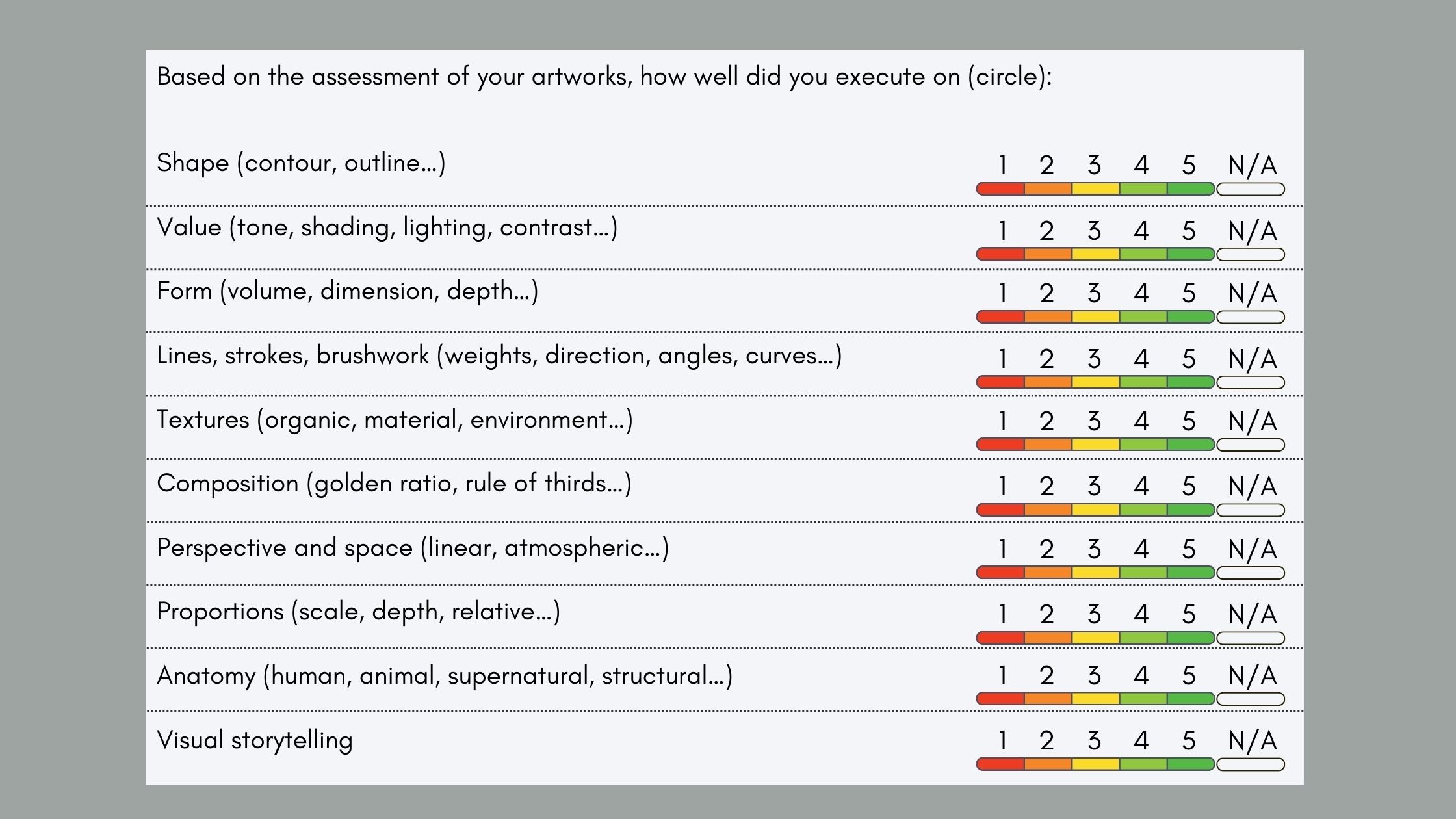
3 – What five things have led to the success of the artists you most admire?
What influences, techniques or styles would you like to emulate in your art? Think of your art heroes. List 3 things you would need to learn and practice to reach their level.
Are there artists whose careers you admire? List 2 things you could implement from their career paths that would make your art journey smoother.
I’m an admirer of James Jean’s career path. He started as a commercial illustrator doing award-winning client work. A decade later he shifted focus onto painting. Now he’s creating mesmerizing museum art, film posters, and whatever epic collaboration he wishes to do.
He’s always embraced sketchbook doodling. I believe that he pushed his creative limits, and consistently upped his skills by continuing his self-directed studies in a sketchbook.
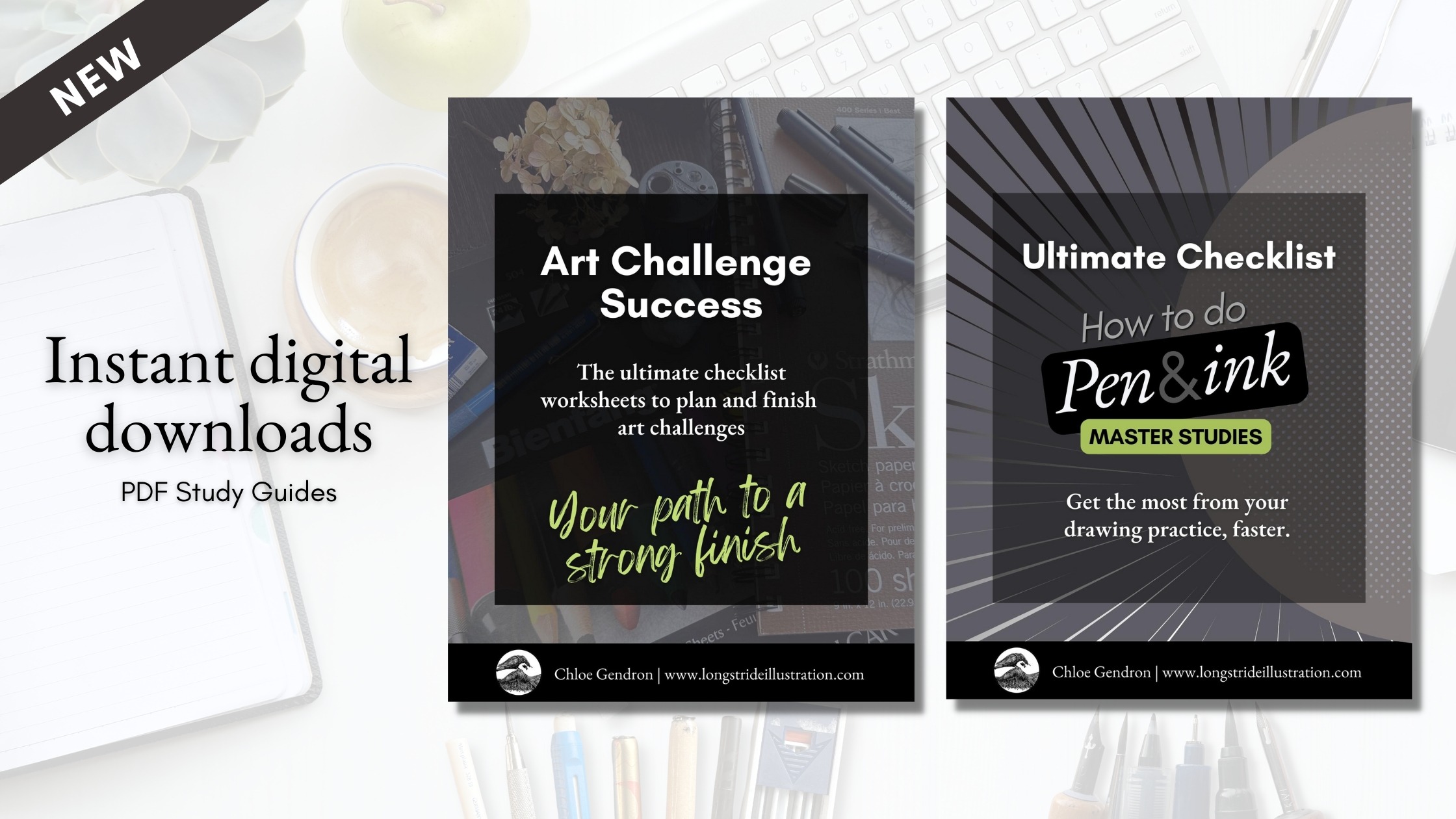
4 – What do you see as your options and what would be helpful?
Based on your answers to the previous 3 questions, write down your ideas for goals that you could put into a go-forward plan.
5 – What might get in the way of your success?
Thinking about your vision and goals, what are some of the constraints that would stand in the way of reaching your desired outcomes?
Common constraints:
- Time
- Money
- Health
- Space/equipment/supplies
- Competing priorities or commitments
- Access (internet, resources, location)
- Self-assurance, confidence
What 3-4 strategies could you implement to address some of your constraints?
My biggest constraints were time and health. Below are two of my strategies to reduce constraints:
Strategy 01 – Time
I’ve been a full-time artist since June of 2022. I started by mostly doing art but soon realized what being self-employed meant.
Six months later, I found that in a 70-hour workweek, only a fraction of that time was about my art.
I got overwhelmed and those hours became unproductive.
In 2024 I made changes that turned my world around…
I used to plan my tasks week-to-week based on what came up. Now the entire year is planned out and divided into 4 quarters.
Each quarter is scheduled into weeks with the respective daily tasks. I’m only allowed to do 3 priority tasks per day – but they must be completed by the end of each day.
In the first 2 hours of each day, I work solely on those priority tasks. In that time window, I don’t look at messages or anything that might derail me from advancing my goals.
At the end of each quarter, I assess my progress and make necessary adjustments if needed. I also dedicate a full day each quarter to learning something new (upskilling).
It’s now clear how many projects I can take on per quarter and what I should say “no” to. There’s also a buffer in case a major issue or opportunity comes up.
I’m no longer anxious about a never-ending to-do list or trying to remember everything in my head. Every action I take is on track to reach my vision and within my capacity to carry out as planned.
I got a lot of ideas from the book ‘Deep Work: Rules for Focused Success in a Distracted World‘ and from taking the class below.
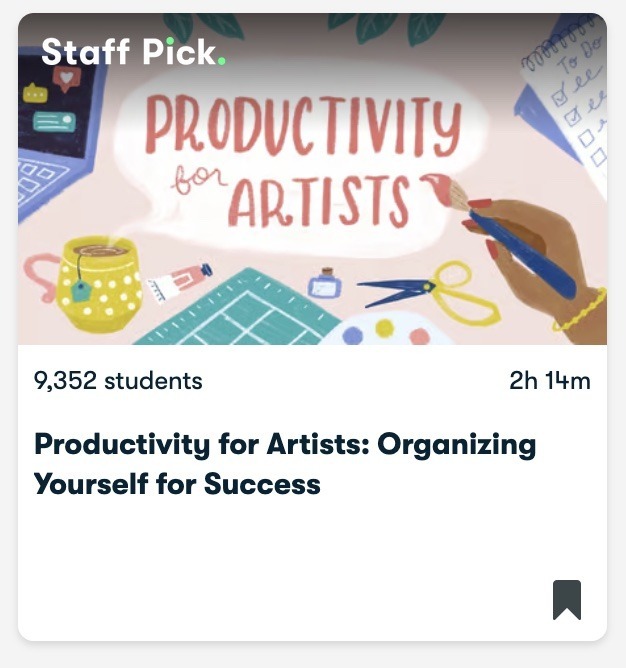
This ‘Productivity for Artists’ class helped me get my schedule under control so that I could spend more time on my art.
Strategy 02 – Health
I developed chronic health issues in the last decade. These niggles were caused by various factors, though sitting and hunching for long hours didn’t help.
For art-making, I have a table-top easel that adjusts from flat to vertical. This easel is portable so I can move it to different locations in my home or positions on my stand-up desk.
I mostly stand at that desk for art making, on a fatigue mat.
Right next to my art table setup is my desktop computer station. When I start to feel fatigued from computer work, I switch to an art project until the energy returns, back-and-forth.
I also set a timer for 45 minutes. When it beeps, I do 10 minutes of exercise. Right next to my work area is a yoga mat and two sets of dumbbells ready to go.
This idea is to be quick between the station switches, from exercise to art-making to business tasks so that it provides continuous energy.
Now I have motivation left over at the end of the day to either hit the gym or my sketchbook.
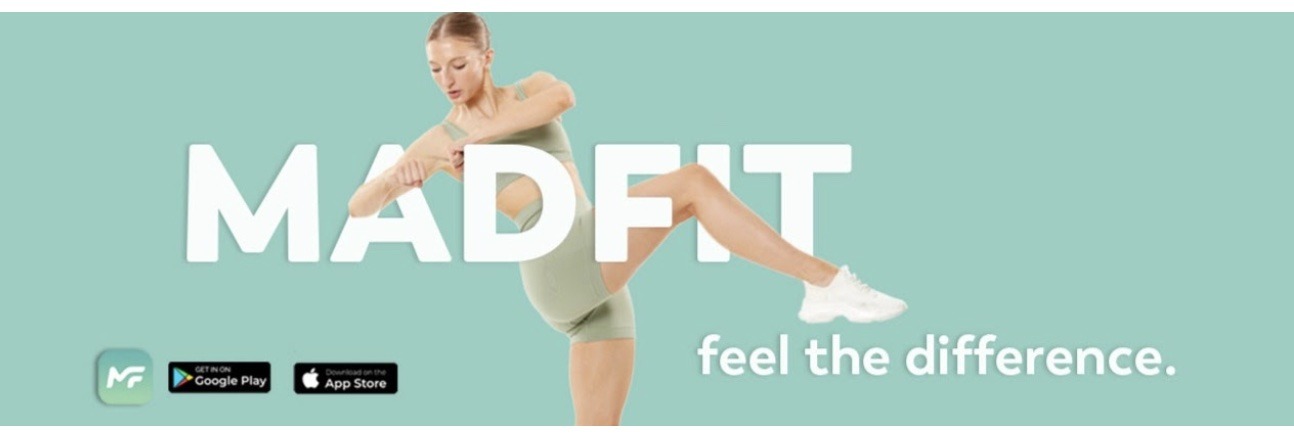
Recommended YouTube workout channels:
So, give thought to what might get in the way of your progress with art goals and come up with 3-4 strategies to address each constraint.
Your Go-forward Plan
Now that you have a vision, goals, addressed gaps, and devised strategies to deal with constraints – you are ready to incorporate all of these into a go-forward plan.
📚 Read the article “5 steps to becoming a better self-taught artist” for steps on how to set up your plan (with a free PDF template).
Part of this plan is matching resources to your learning needs.
Resources
I’ve linked resources throughout this article and below.
Also, if you have identified “self-confidence” as one of your constraints or want direct feedback from a trusted source, below are top tips for your search:
When shopping for courses, choose a learning platform that includes additional support, such as 1:1 coaching, learning paths, instructor critique, and student forums, such as:
Some of the artists you follow or subscribe to might have a subscription program, or discussion forum that you can join for a fee or free.
Look for their website, on Patreon, or on other social media platforms to see if they offer these resources.
With these coaching questions, suggestions, and resources, you’ll be able to make progress more consistently with your art.

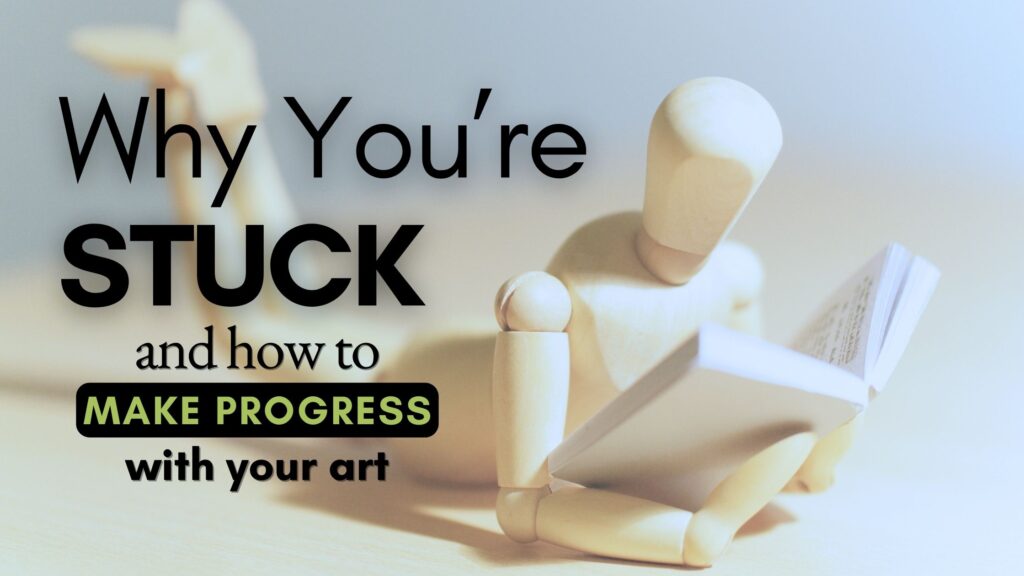




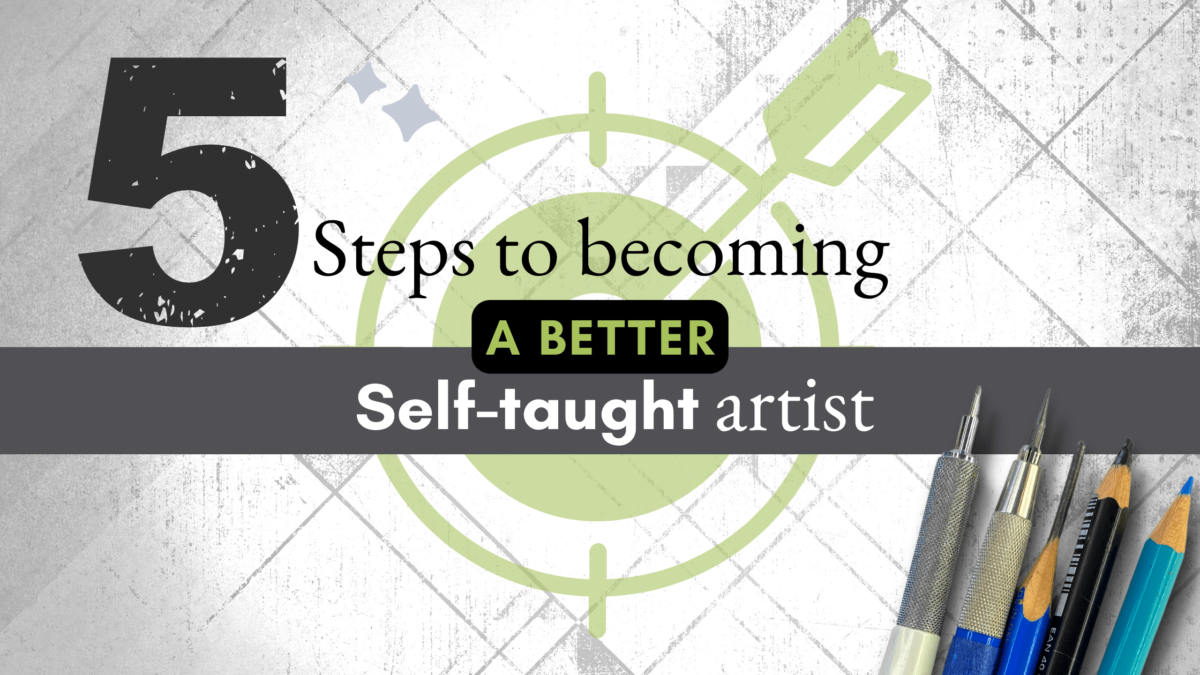
Very useful – and detailed! – information. Thank you for sharing! You are giving me ideas 🙂
Thank you! Glad you enjoyed the article.